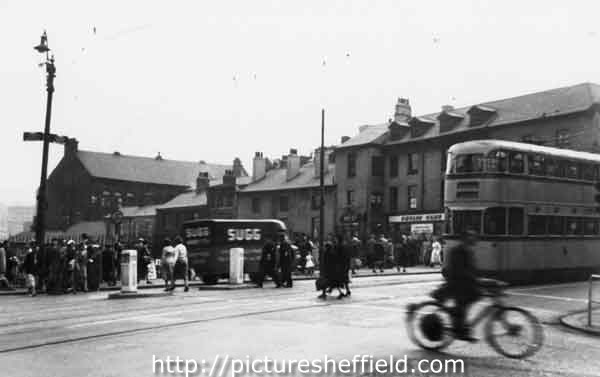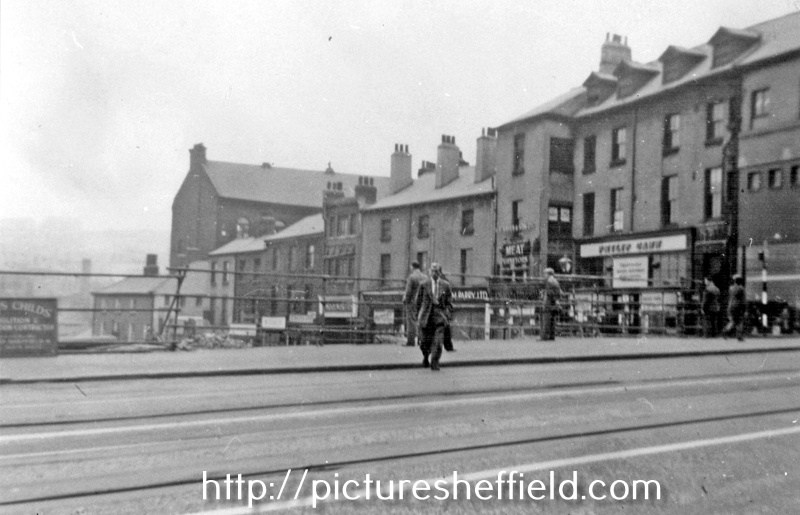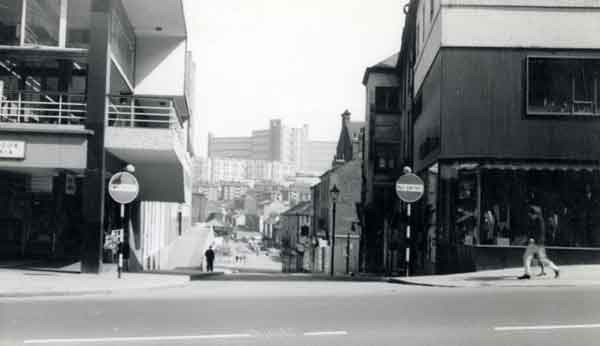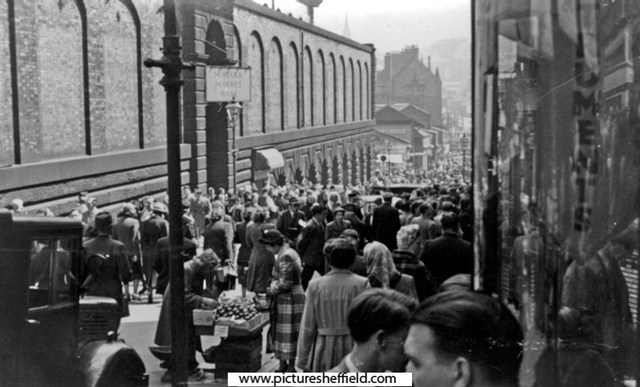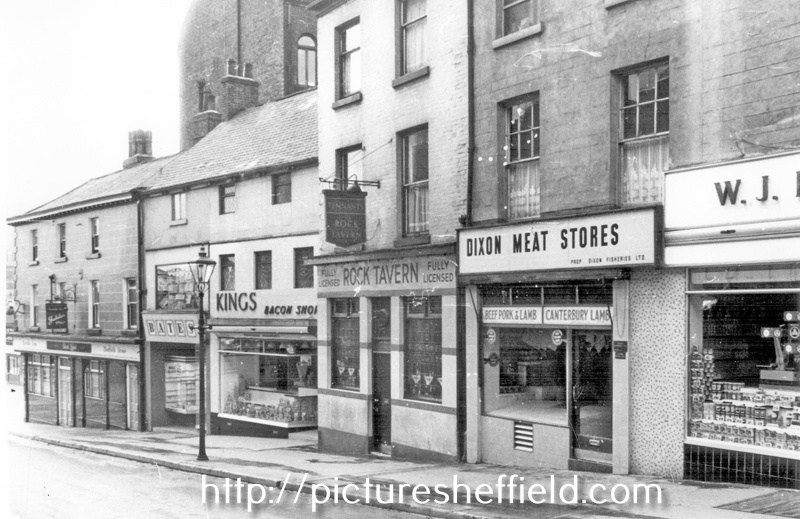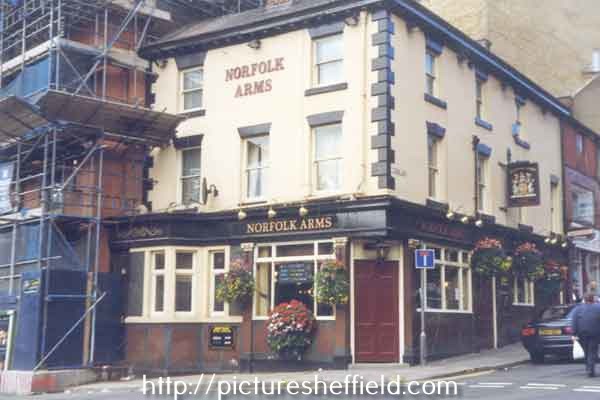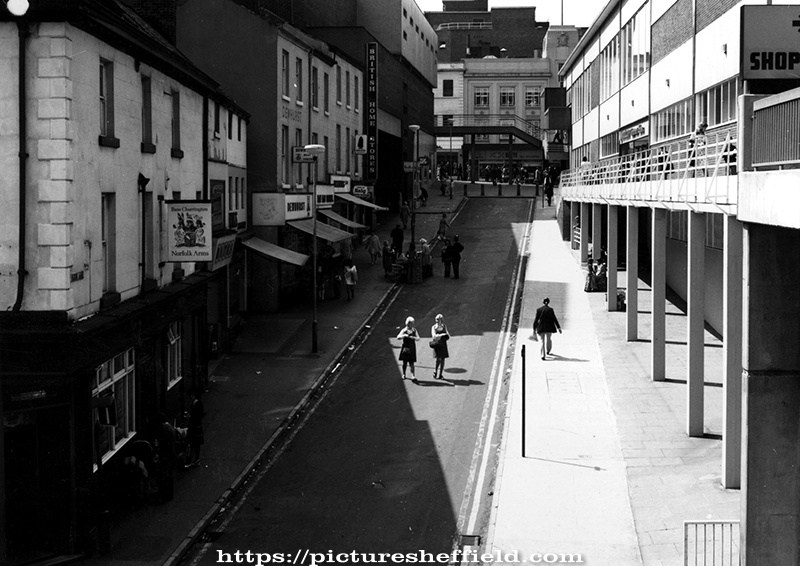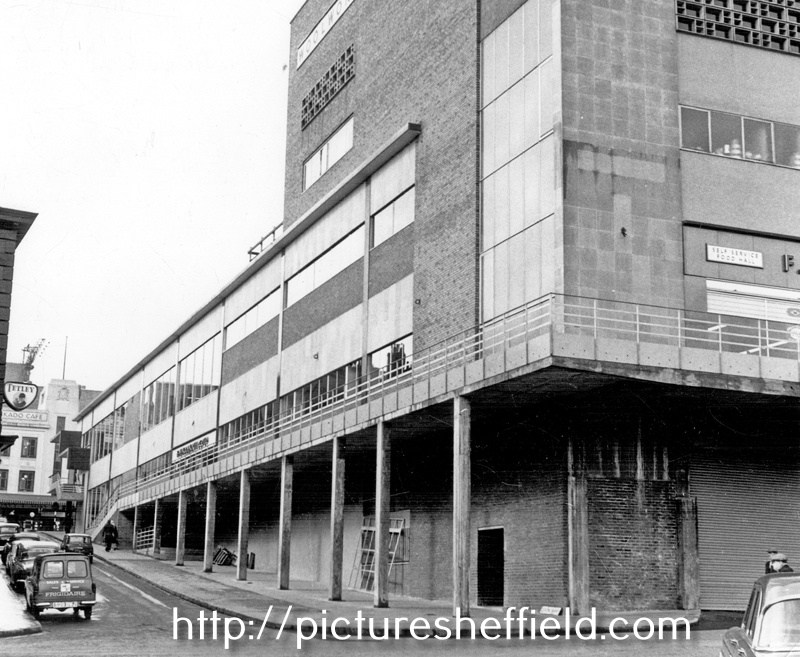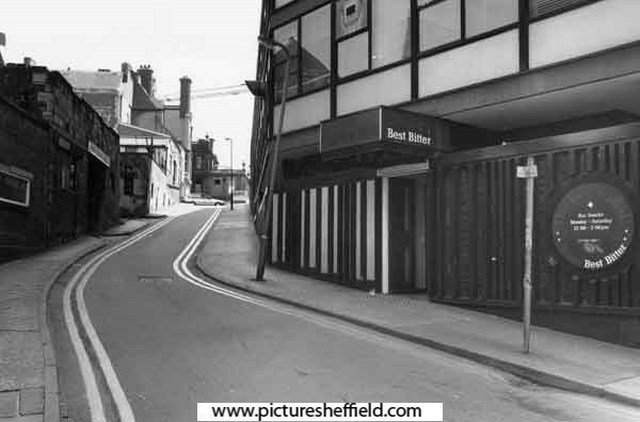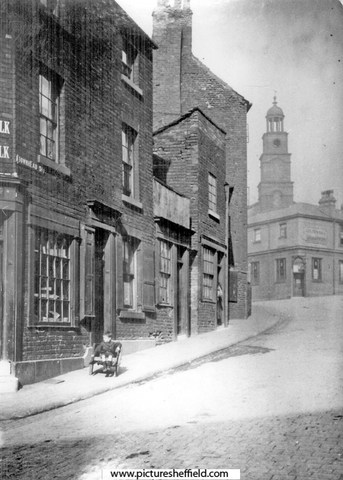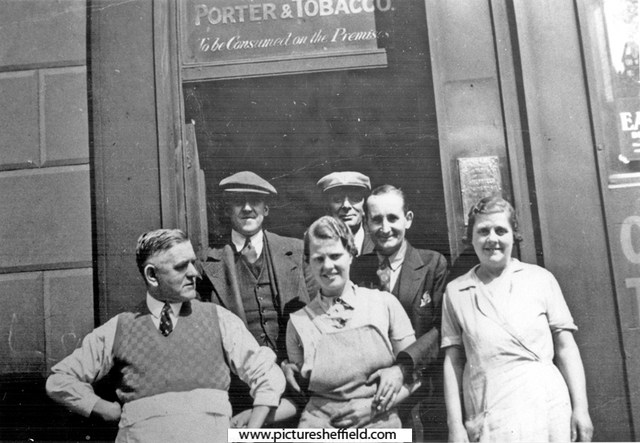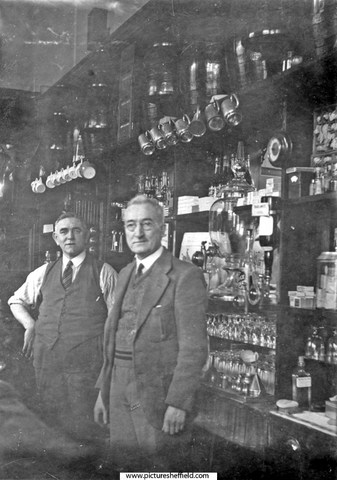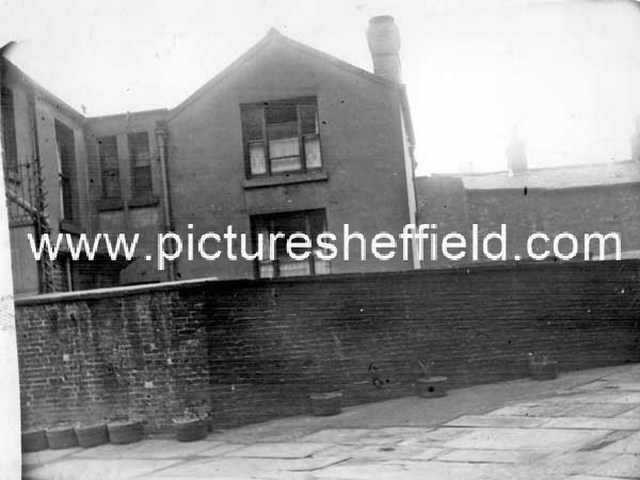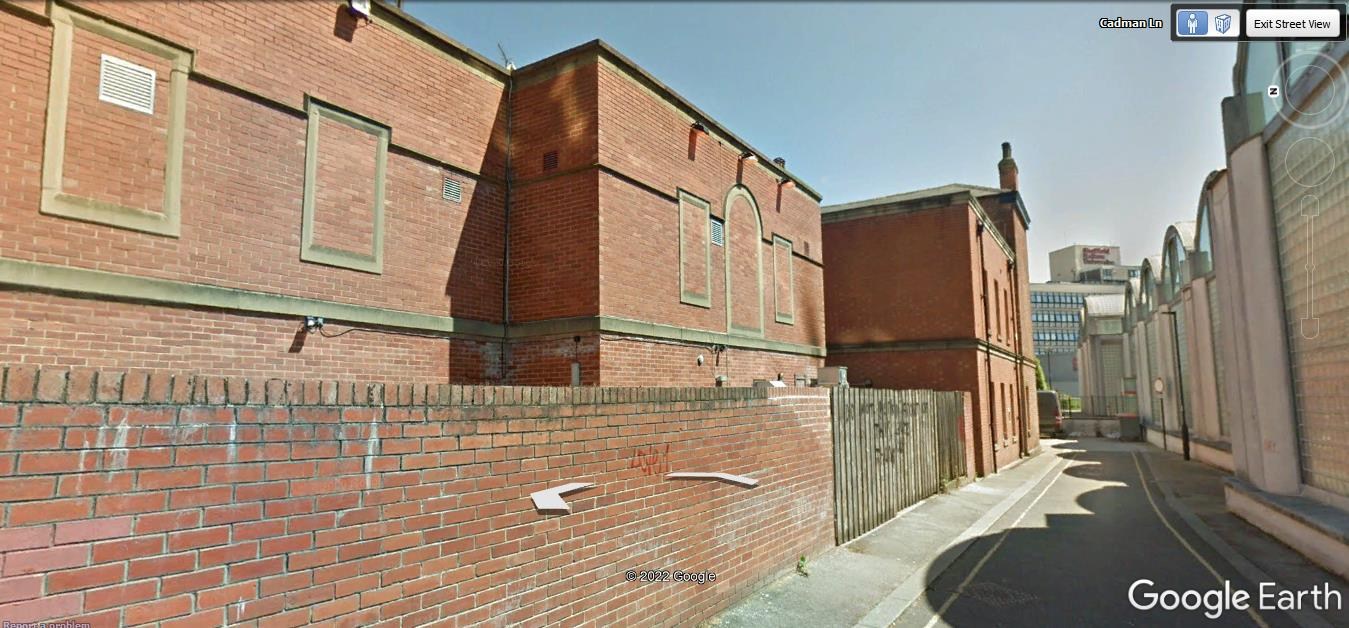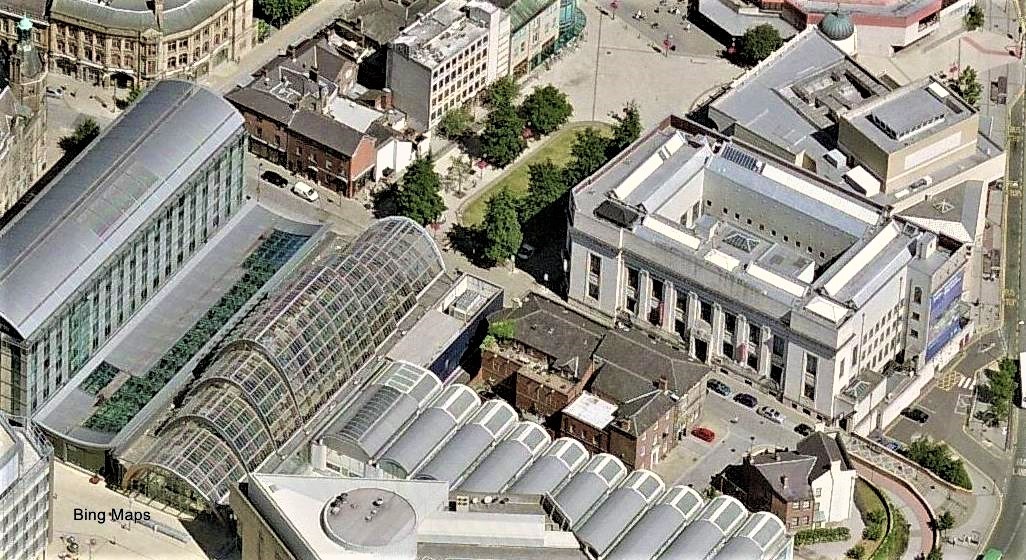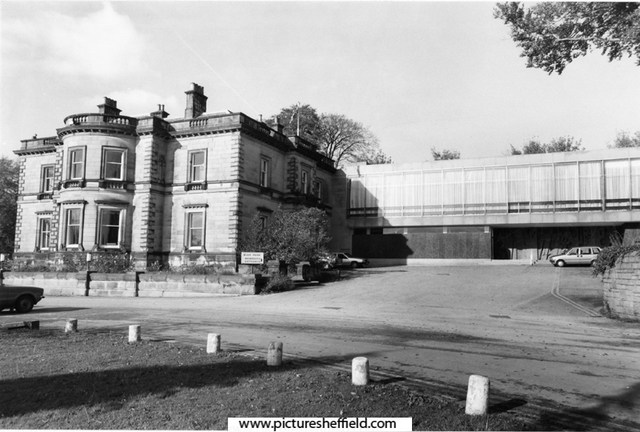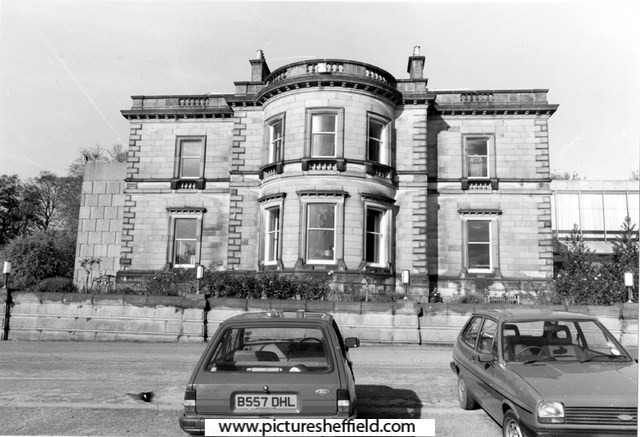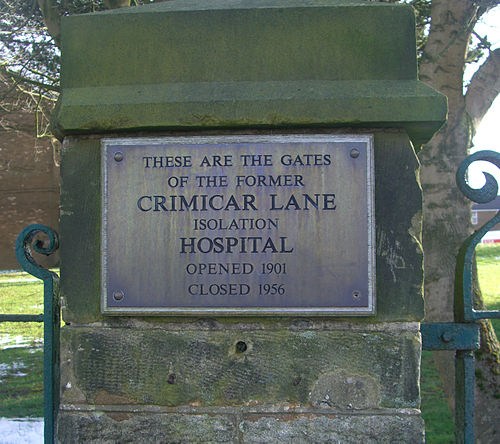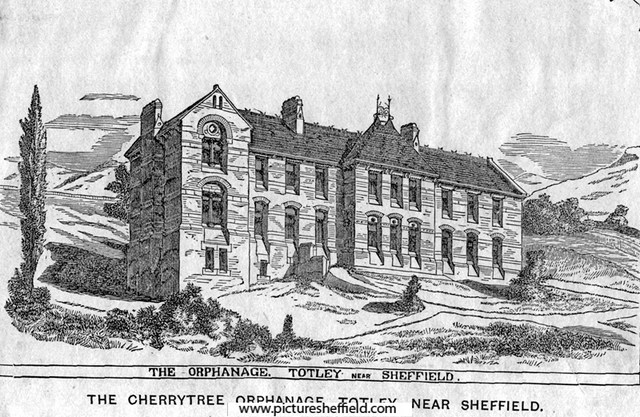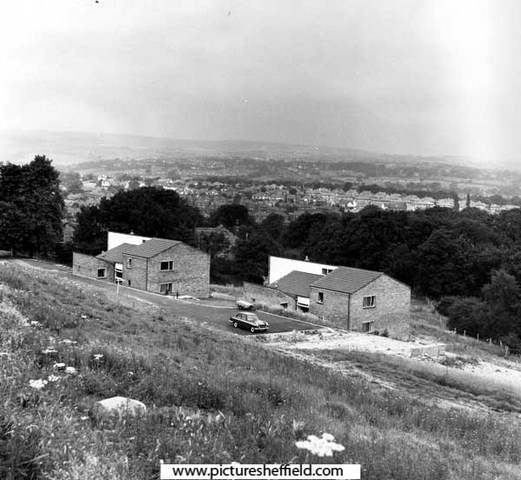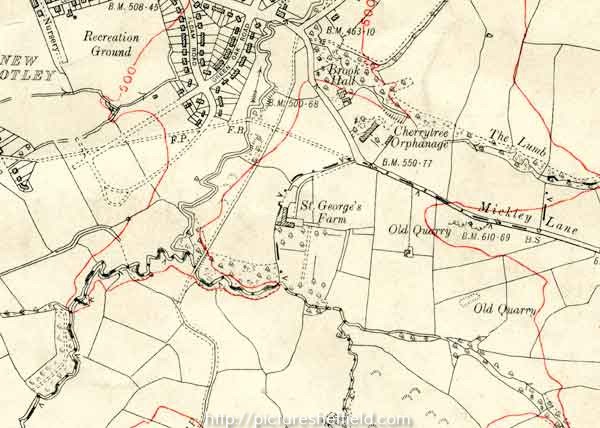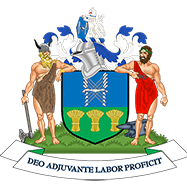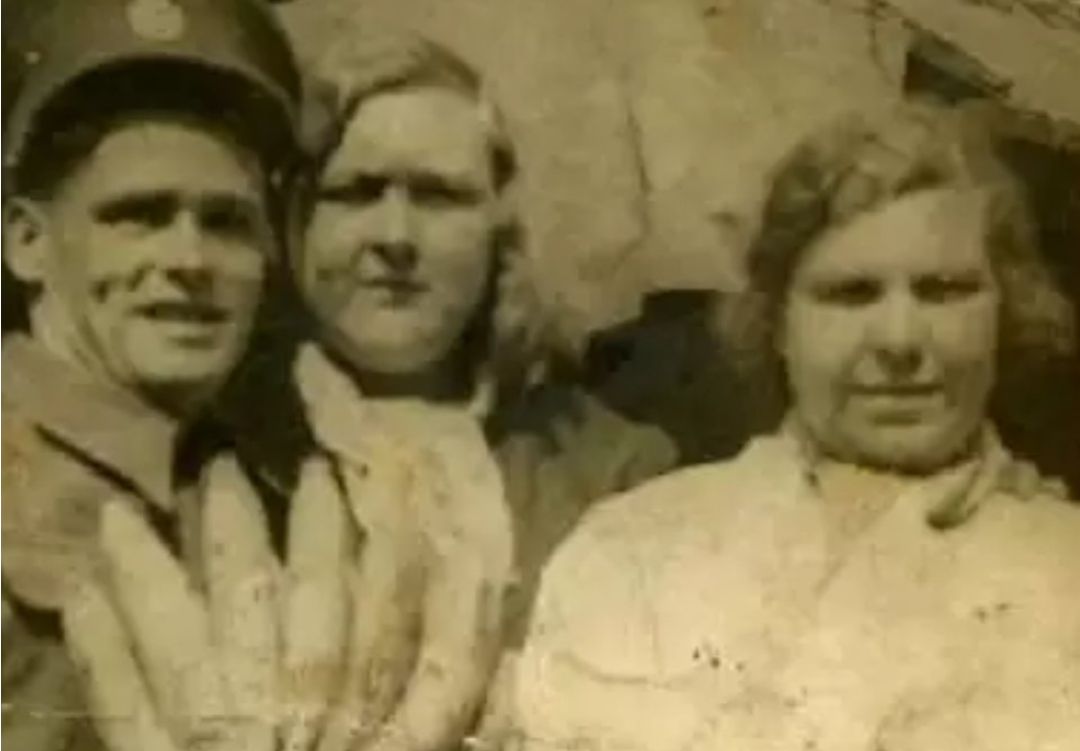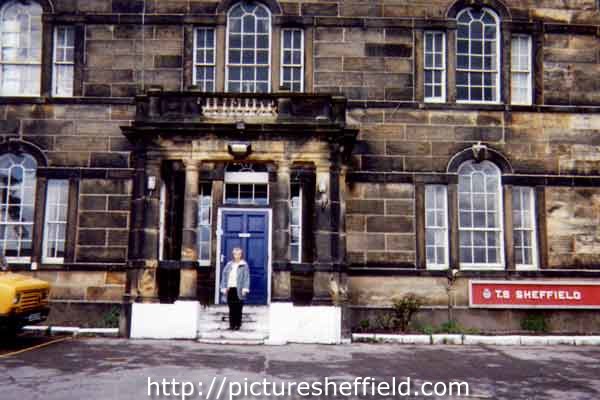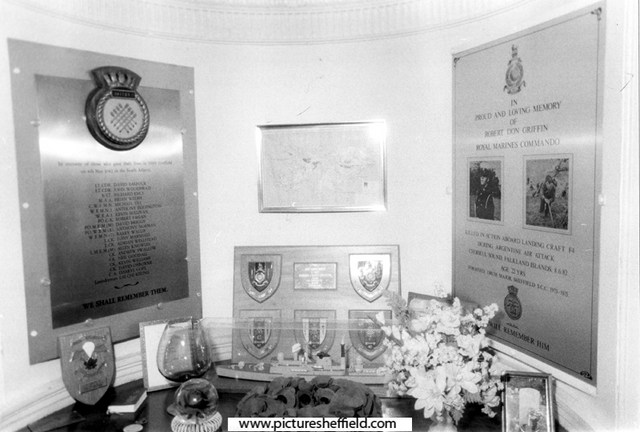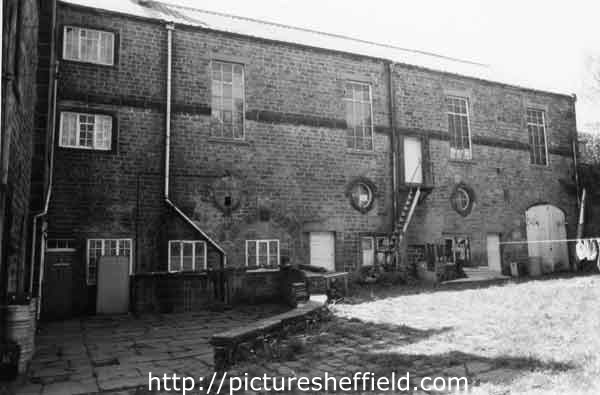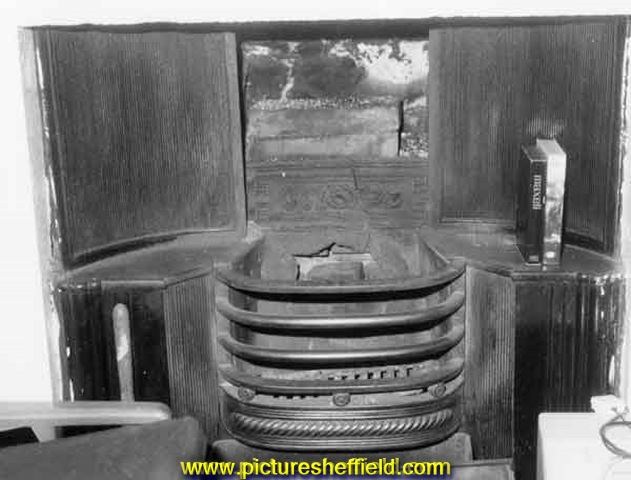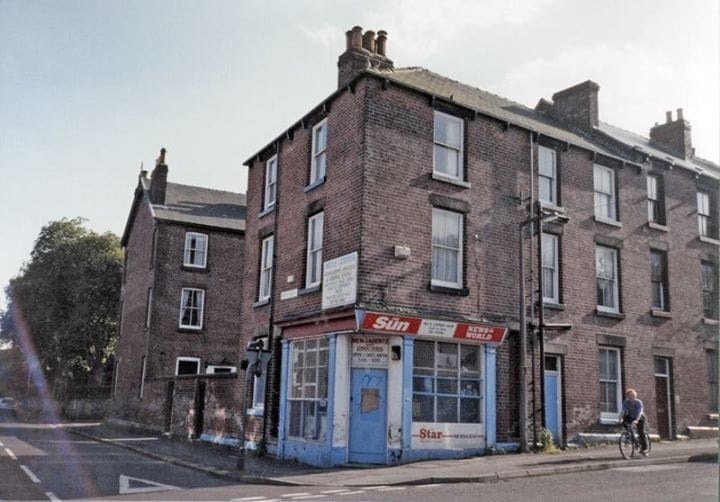Search the Community
Showing results for 'coal pit lane'.
-

Dixon Lane in Sheffield City Centre
Ponytail replied to Sheffield History's topic in Sheffield History Chat
Junction of (foreground) Haymarket and (centre) Dixon Lane. 1960's p01431 This image was originally part of the Tim Hale Photographic Collection. It was purchased at auction in September 2019 through donations from members of the public and a grant from the Graves Trust. Corner of Dixon Lane and Haymarket (before the construction of F. W. Woolworth's) c.1959 s37986 Dixon Lane from Haymarket, after the demolition of Norfolk Market Hall. 1959.s14912 Dixon Lane, June 1952, from Haymarket, Norfolk Market Hall on the left, demolished 1959. s00327 Norfolk Market Hall and Castlefolds Market, Exchange Street on Ordnance Survey map, showing Dixon Lane. 1890. https://www.picturesheffield.com/frontend.php?keywords=Ref_No_increment;EQUALS;y06786&pos=87&action=zoom&id=59990 -

Dixon Lane in Sheffield City Centre
Ponytail replied to Sheffield History's topic in Sheffield History Chat
Dixon Lane, (l. to r.) No. 26, Norfolk Arms, No. 24, T. Bates (Wallpapers) Ltd., paint merchants, No. 22 and 16a, William John King Ltd., provision dealers, No. 20, Rock Tavern, No.18, Dixon Meat Stores. s21768 Norfolk Arms public house, No. 26 Dixon Lane. August 1999.v04579 Dixon Lane (l. to r.) No. 20 Dewhurst, butchers; No. 18 Kings, delicatessen, No.16 Thurston's bakers; No.14 Thresher Drinks Store and side entrance to British Home Stores. https://www.picturesheffield.com/frontend.php?keywords=Ref_No_increment;EQUALS;t14010&pos=56&action=zoom&id=151404 Dixon Lane and Castlefolds, F. W. Woolworths and Co. Ltd., right. 29th March 1962. s14903 Photographer: City Engineers Dept. Dixon Lane looking towards Haymarket, including No 26, Norfolk Arms public house, and British Home Stores, left; F.W. Woolworth and Co, right. 19th May 1975. s00174 Photographer: City Engineer and Surveyors 24122/2. -
Part of Robert Brightmore's late premises at the top of Church Lane bought by Wild and Pass.1820, 1824. https://www.picturesheffield.com/frontend.php?keywords=Ref_No_increment;EQUALS;arc04043&pos=4&action=zoom&id=90822 Also, other property of Wild and Pass and Ann Hancock in Orchard Lane and Sands Paver [Sands Paviours]. The plan has been cut and pasted to an outline of the adjacent properties and the first suggested line of Bow Street drawn across. Refers to John Sheldon, Orchard Lane, Church Street, William Pass, James Wild, Independent Methodists Society, Ann Hancock, John Milward, Bow Street. Firth College, Leopold Street / Bow Street, 1891 https://www.picturesheffield.com/frontend.php?keywords=Ref_No_increment;EQUALS;arc07488&pos=400&action=zoom&id=106877 Shows Sands Paviours.
-

The Golden Ball in Sheffield
Ponytail replied to Sheffield History's topic in Sheffield Pubs and WMC's
The Golden Ball public house, No. 69 Campo Lane from Vicar Lane. 29th June 1986.s30843 The Golden Ball public house, No.69 Campo Lane. https://www.picturesheffield.com/frontend.php?keywords=Ref_No_increment;EQUALS;t09557&pos=2&action=zoom&id=47272 -

The Golden Ball in Sheffield
Ponytail replied to Sheffield History's topic in Sheffield Pubs and WMC's
Townhead Street looking towards Campo Lane and the Golden Ball public house, gable belongs to the Burns public house, St. James Church Spire in background. 1898.y00595 Group including landlord Tommy Ward outside the Golden Ball public house, Townhead Street/Campo Lane. s09419 Information with the photograph. "Tommy Ward 'Senior' is on the left." Interior of The Golden Ball. 1937.s07031 Information with the photograph. "Mr. T. W. Brookes, on the right, was the landlord and Mr Tom Ward the barman.The Golden Ball was popular with actors from the Playhouse." St. James' Churchyard and rear Golden Ball public house, No. 69 Campo Lane and No. 10 Townhead Street. u00720 Ordnance Survey Map 1890, sheet no. Yorkshire No. 294.8.16. https://www.picturesheffield.com/frontend.php?keywords=Ref_No_increment;EQUALS;q00082&pos=7&action=zoom&id=152826 -
Thought i`d have a look on Google Earth at the exact location of Cadman Street to get an idea of the area in tozzins enquiry! by mistake i searched Cadman Lane, which took me to the lane behind the Graduate Pub on Surrey Street, i was intrigued by the brickwork on the rear of the pub, can anyone tell me if this is an extension to the building or is it part of the original building? A couple of photographs, one from Google Earth showing the brickwork and one from Bing Maps showing the buildings location.
-
Any info on the house or the gate house please ? I know it was a Naval Cadette training base , where has the old boforse gun gone?, but has it past naval links,who built it and when ? Also the playing fields in front of it , what are they built on i.e. gardens or the remains of mine workings, as I have seen large issues of water spring up from the bank sides in front of the old wood at the side,after very heavy rain fall.
-
S. Newbould’s premises on Little Sheffield Moor, and John Taylor’s house, 1787. https://www.picturesheffield.com/frontend.php?keywords=Ref_No_increment;EQUALS;arc03771&pos=28&action=zoom&id=99407 Land purchased of the Duke of Norfolk by Samuel Newbould and Thomas Holy at Little Sheffield. 1803. https://www.picturesheffield.com/frontend.php?keywords=Ref_No_increment;EQUALS;arc04083&pos=7&action=zoom&id=72460 Several fields between Broom Hall Lane and The Moor, across which Clarence Street was afterwards made. The line is indicated on this plan. Shows Broomhall Lane, Younge Street and Samuel Newbould’s property. William brother of Samuel Newbould. (Information from Grace's Guide, "The second son William (1749-1802) married Sarah, daughter of Thomas Holy, button manufacturer, and was in partnership with his father-in-law.") Ground on Little Sheffield Moor demised by the Marquis of Rockingham to T Holy and William Newbould, 1776. https://www.picturesheffield.com/frontend.php?keywords=Ref_No_increment;EQUALS;arc03770&pos=27&action=zoom&id=99406 House, workshops, erected on the leasehold ground of Thomas Holy and William Newbould, [The Moor], 1790. https://www.picturesheffield.com/frontend.php?keywords=Ref_No_increment;EQUALS;arc04259&pos=23&action=zoom&id=34922 Marked: William Newbould, T. Holy's house, warehouse, etc. (Information from Grace's Guide "The Newboulds were tilting at Loxley. Miller remarked: “Old Wheel Dam . . . would seem to have run both a tilt and a grinding wheel in the early part of the nineteenth century, when for seventy or eighty years, the property was owned by the Newboulds. Messrs. Samuel Newbould and Co. were tilters here for a considerable period but the Dentons leased the forge from somewhere about 1845 to 1885.”) Plan of an Estate situated at the Old Wheel in the Parish of Bradfield the property of S Newbould. 1820. https://www.picturesheffield.com/frontend.php?keywords=Ref_No_increment;EQUALS;y09601&pos=4&action=zoom&id=3529 Plan of land at Loxley intended to be sold to Samuel Newbould (part between Old Wheel Dam and Storrs Wheel), by W. and J. Fairbank. 1825. https://www.picturesheffield.com/frontend.php?keywords=Ref_No_increment;EQUALS;y09598&pos=6&action=zoom&id=44514
-

Maps of the Parish of Handsworth, based on the Enclosure Award Maps (1805) and corrected up to 1855.
Ponytail replied to Ponytail's topic in Sheffield Maps
Map of Woodhouse Junction area, c.1855. https://www.picturesheffield.com/frontend.php?keywords=Ref_No_increment;EQUALS;arc02940&pos=1&action=zoom&id=93148 Includes: Green Gate Lane; Birley Vale Branch Railway, Beighton Branch Railway, Manchester Sheffield and Lincolnshire Railway; River Rother; Woodhouse Colliery; Woodhouse Mills; Shirecliffe Brook; Cinderhill Green Road; Furnace Lane, Woodhouse Junction Station; Shaft. From a volume of Maps of the Parish of Handsworth, based on the Enclosure Award Maps (1805) and corrected up to 1855. Dimensions of original: 34 x 51cm. Original at Sheffield City Archives: CA369/1. -
Tapton Hall, Shore Lane showing extension built 1968 by Hadfield, Cawkwell and Davidson. October 1988. s29369 s29367
-
Copied from Wikipedia. "In 1955 the Board recommended that Crimicar Lane should no longer be used as a hospital and the tuberculosis Huts were demolished at that time.[2] All patients were transferred to Lodge Moor Hospital on 31 May 1956.[1] The hospital stood empty for some time before the remaining buildings were demolished to make way for the housing which now stands on Westminster Crescent. All that remains of the old hospital are the perimeter wall and the main gates which have a memorial plaque attached to them.[1]" Full Wikipedia: https://en.m.wikipedia.org/wiki/Crimicar_Lane_Hospital Crimicar Lane Hospital, Sheffield https://discovery.nationalarchives.gov.uk/details/r/2fecb3e5-bc53-4b16-96d4-5df8d95893df Including Information: Crimicar Lane Hospital and Sanatorium was opened in November 1902 for the reception of smallpox cases. It consisted of two wards, each accommodating 21 beds; an isolation block accommodating four wards each with two beds; also an administrative block, laundry and disinfector. Prior to the First World War the hospital was primarily for cases of smallpox, but consumptive (tuberculosis) patients were admitted if smallpox cases were lacking. In 1915 a temporary wooden ward was erected to accommodate 48 patients and an extension to the administrative block was built in 1916. Many patients were those associated with the cutlery industry: grindstones and buffing wheels created a huge amount of gritty dust. Silicosis was the cause of great mortality, as was tuberculosis which was often associated with the "dolly polishing" of silverware. In 1950 the hospital had accommodation for 53 patients. In 1955 the Planning Committee of Sheffield Regional Hospital Board recommended that the use of the premises as a hospital be discontinued and that the patients be moved to Lodge Moor Hospital. The buildings were to be retained pending instructions from the Ministry of Health. The patients were all transferred out of the hospital on 31 May 1956; the patients at Commonside Sanatorium also being transferred to Lodge Moor at around the same time. The hospital buildings were later demolished to make way for housing; all that remains are the part of the perimeter wall and gates (2004). Administration The hospital was administered by Hospitals Committee of Sheffield City Council, established under the Public Health Act, 1875. In 1927 this committee became a sub-committee of the Health Committee. At the establishment of the National Health Service in 1948 management, like other hospitals formerly administered by the Council, passed to the Sheffield No 3 Hospital Management Committee of Sheffield Regional Hospital Board (SRHB).
-
Plan of a projected street between Queen Street and West Bar Green. 1817. https://www.picturesheffield.com/frontend.php?keywords=Ref_No_increment;EQUALS;arc04217&pos=13&action=zoom&id=105201 Marked: Tenter Street, Pea Croft, West Bar Green, Silver Street, Paradise Square, Workhouse Croft, Queen Street, workhouse, reservoir, fitting up shop, boring mill, Foundry, warehouses, smiths shops, fetling shop [?fettling shop], counting house, lumber house and model chambers, engine house. Tenants / owners: John Haslehurst, W. B. Thomas, John Clayton, Joseph Whitehead, Samiel Eadon, Robert Burnand, S. B. Ward, George Smith, - Eyre, Charles Rhodes coopers shops, John White, John Darwin, Benjamin Hounswind?, John Sevrap?, and Edward Gains. Town land, extending from Broad Lane End to West Bar, 1778. https://www.picturesheffield.com/frontend.php?keywords=Ref_No_increment;EQUALS;arc04287&pos=18&action=zoom&id=105972 The plan has notes made in 1784. Marked Broad Lane End, Hollis Croft, Rotten Row, West Bar Green, Pea Croft, White Croft, Hawley Croft, Gregory Row, Silver Street, Hick Stile Field, Queen Street, Workhouse Croft, and Workhouse. George Hounsfield, Samuel Radford, John Birks, George Allen, George Oates, John Haywood, Hollis Hospital land, Thomas Wilkinson, Josh. Bower of Hollis Hospital, Martha Hill, John Foster, William Thornton, John Thompson, Matthew Lambert, John Goodwin, Ebenezer Wall, George Greaves, Thomas Radford, Joseph Hepworth, Mary Cowley, Samuel Crook, Widow Bradshaw, George Pears, John Holberry?, Catherine Dixon, Mark Skeltens?, John Hobson, Stephen Green, John and George Wild, [?] Green, The Overseers of the Poor in the Township of Ecclesfield, Ecclesfield Workhouse [tenants of this parcel of land], John Longden, Mary Pearson, John Darwin and Co., and Samuel Marshall.
-
Cherrytree Orphanage, Mickley Lane, Totley. Founded in Sheffield about 1863 by E.P. Taylor, Esq. Foundation stone laid 21st August, 1867 by John Webster Esq., Mayor of Sheffield. Total cost £4,000. 1872. s07784 Picture taken from the 8th report, 1872. In 1868, Mr Taylor, transferred the property to trustees. The institution, which was supported by voluntary subscriptions and a Goverment grant, had for its objects the boarding, clothing, and education of poor children who had been deprived of both their parents, irrespective of religious belief ot nationality. Miss Stronach was matron in 1906. Cherrytree Orphanage, Mickley Lane, Totley. 1963. https://www.picturesheffield.com/frontend.php?keywords=Ref_No_increment;EQUALS;s35076&pos=2&action=zoom&id=70519 Cherrytree Homes, Mickley Laneu06868 Buildings used to house 1 carer and around 6 children, built around 1969. Once completed the original Cherrytree orphanage was subsequently turned into an old peoples home (Information care of Sharon Parkinson). Presentation to Cherrytree Orphanage, Mickley Lane. 14th February 1967. https://www.picturesheffield.com/frontend.php?keywords=Ref_No_increment;EQUALS;s07784&pos=5&action=zoom&id=11019 OS Map dated 1935, showing Cherrytree Orphanage & St George's Farm, one time home of John Ruskin. y12786
-
Does anyone remember the people in this photo? One is Big Ada from the old market on Dixon Lane Any memories of these people at all?
-
http://www.lhi.org.uk/projects_directory/p...rt_history.html Extract : Throughout the 19th and 20th centuries, the areas of Darnall and Tinsley were well known across Sheffield for the coal and steel industries. The immediate area around High Hazels Park was mined for coal, iron and stone, which were worked in the adjacent woodlands. Given the industrial nature of the area, High Hazels Park offered a welcome contrast to the surrounding hard landscape and provided local residents with an escape from the built up environment. The Park offered a vital link to the natural world, and was a much-valued place for relaxation, participation in sports and family pursuits for people from all over Sheffield. In 1850 William Jeffcock (the first Mayor of Sheffield) commissioned High Hazels House, 'to be built regardless of cost'. When finished, the principal rooms were described as being 'splendidly decorated and of noble proportions'. There were numerous bedrooms, stabling for twelve horses, and a number of outbuildings. The arches that lead to the main entrance were built of the same stone as the Houses of Parliament. High Hazels House was, and indeed remains, an impressive work of design and architecture.
-
Beginnings of Sheffield Water Works. Extracts from Reminiscences of old Sheffield, its streets and it's people. Edited by Robert Eadon Leader 1875 from articles and letters from the Sheffield and Rotherham Independent 1872/3. Page 42. Twiss: The original water-house of the Water Company is still standing, at the sharp angle between Pinfold Street and Campo Lane. It has just come into the possession of the Town Trustees, and will doubtless soon be sacrificed on the altar of street improvements. A comparison of this with the present handsome premises of the Company, in Barker Pool, exhibits very strikingly the contrast between the old order of things and the new. Leighton: In the angular space at the top of Townhead street, formed by the meeting of Church Street, Bow Street, Pinfold Street, and Townhead Street, stood formerly the Townhead cross. None of us can remember it — I doubt whether any of us know when it disappeared, or whither it went; but that is no reason for passing it by without notice. Twiss: The premises at the top of Townhead Street now occupied by Mr. Jackson, pork-butcher, have a history. Here resided, more than a century ago, Mr. Matthewman, who was one of the originators of the Water Company. In 1744, he and Mr. Battie succeeded to the powers granted in 1713 to Messrs. Goodwin and Littlewood by the Lord of the Manor, and constructed the first works at Crookes moor. He was the maternal grandfather of Mr. Albert Smith. Everard: This house was occupied for some years by Mr. Moorhouse, surgeon, who got killed by a fall from his horse. On his decease, Mr. James Kay, who had served his time with him, purchased the business of the widow; and, after living and carrying on his profession on the premises for a considerable period, he built and removed to the house in Victoria street, Glossop road. At the time it was generally thought he was going too far out into the country. Mr. Kay was a tall and noble-looking man, more especially when on horseback. Page 135. Leighton: The old Lancasterian school — before that a riding school, as its rough interior will enable you readily to believe — has broken out into shops since the new schools were built in Bowling Green Street. Some seventy or eighty years ago, or so, that building and the "Water-house" at the bottom of Allen Lane, where the Burkinshaws were accustomed to preside over the sale of water by the bucketful, were the extremity of the town in this direction. On the premises last mentioned, the wooden water pipes, which may occasionally be seen when the Company is making repairs, were bored by hand. Some of them were taken up from Broad Lane only a short time ago. Johnson: That property was sold by the Duke of Norfolk to Mr. Matthewman and the original proprietors of the Water Company, and it was in their possession in 1741. It was afterwards sold to Lawyer Hoyle, and then to its present occupier, Mr. Laycock. Pages 261-263. Everard: We must not pass without a mention the site of the beginning of Sheffield's Water Works, when springs were found to be no longer adequate. Although its history is so well known that we need not dwell on it, suffer me to remark that in its later days it was a square walled-in pool, and that it was allowed to remain until, instead of a benefit, it had become a stagnant nuisance. Leighton: The first house erected on its site was built in 1793, by Mrs. Hannah Potter, as a public-house, with the odd sign of "Well run Dimple"— an exclamation of commendation addressed to a horse that distinguished itself on Crookes Moor racecourse. Johnson: Forgive me for once more quoting James Wills, as he not only describes the old pool, but narrates an incident of some interest : — "The Barker's Pool, noted for nuisance indeed, Green over with venom, where insects did breed, And forming a square, with large gates in the wall, Where the Rev. Charles Wesley to sinners did call. Once when he was preaching, an officer bold March'd up through his audience, adorned with gold. Mr. Wesley perceived him with drawn sword in hand, And open'd his waistcoat as he saw him stand, Being fill'd by repentance by hearing the word. In those days persecution, that giant of hell, Stalk'd along in mad frolic; and, strange for to tell, Pursued the poor Christians, abused them sore, Resolv'd that those people should never preach more; But the Wesleys and Whitfields, being fraught with pure zeal, Not fearing their lives, for sinners did feel; And the Mulberry Street preaching house being too small, Wesley stood with his back against Barker's Pool wall." Leonard: Mr. Samuel Roberts gives a curious account of one of the uses to which Barker pool was put in his young days. "It was," he says, "well walled round. In the event of a fire (happily a very rare one) the water, on being let off, could be directed to most parts of the town. All the channels were then in the middle of the streets, which were generally in a very disorderly state; manure heaps often lying in them for a week together. About once every quarter the water was let out of Barker pool, to run into all those streets into which it could be turned, for the purpose of cleansing them. The bellman gave notice of the exact time, and the favoured streets were all bustle, with a row of men, women, and children on each side of the channel, anxiously and joyfully awaiting, with mops, brooms and pails, the arrival of the cleansing flood, whose first appearance was announced by a loud continuous shout: all below was anxious expectation — all above a most amusing scene of bustling animation. Some people were throwing the water up against their houses and windows; some raking the garbage into the kennel; some washing their pigs; some sweeping the pavement; youngsters throwing water over their companions or pushing them into the wide-spread torrent. Meanwhile a constant Babel-like uproar, mixed with the barking of dogs and the grunting of pigs was heard both above and below till the waters, after about half an hour, had become exhausted." Leighton: As connected with the supply of water you will also remember that Mr. Roberts speaks of the supply of water brought in pipes to a receptacle in Townhead Street, from which it was the business of a number of men to take it in casks, fixed on the body of a wheelbarrow, holding about fifty gallons, to all parts of the town to sell. "Water Isaac" was a well-known member of this band of barrel men. Mr. Roberts mentions too a large water reservoir belonging to Mr. Matthewman, over Mr. Winter's candlestick factory — subsequently Mr. Bardwell's auction room — for supplying the town with Crookes Moor water. Wragg: On the site of the houses where the Fire brigade now reside, in Balm Green, there used to be some very old houses, bearing the date of erection as in the seventeenth century. In 1671, there were the following public wells: Burnt tree well, Water Lane well, Workhouse well (the "pump," in Westbar, is no doubt its modern representative), Webster well, and Flint well. There were also the troughs in Water Lane. Leonard: We have come across other sources of water supply in the course of our rambles — Bower spring, and the spring in Bailey's yard, Broomhall spring, and the rest. It is not so very many years since some of these were still used. The Mercury, of January 27, 1827, records that "A cast iron pump has been recently placed at the bottom of Sheffield Moor, chiefly through the exertions of the Overseers of Ecclesall Bierlow. This pump will be a great accommodation to that part of the town, they having had to procure their supply of water from an open well, which was often subject to nuisance. A reservoir has been made connected with the pump, capable of containing about 10,000 gallons, which will afford a supply for the summer months. At the head of the subscription list we see the name of Earl Fitzwilliam for £20, and that of Rowland Hodgson, Esq., for £5."
-
Hi does anyone have any information about a location known as Crooked Steps? It is shows as an ancestors address in the 1881 Census and listed as Harvest Lane. I've checked out Picture Sheffield but couldn't find any pics specifically listed as Crooked Steps. I know it was/is hilly around there so I'm guessing there literally were a set of crooked steps, it just seems odd to have as an address. Thanks in advance!
-
Plan of Land near Portobello agreed to be leased by Benjamin Withers to Samuel Sharman and others. 1835. https://www.picturesheffield.com/frontend.php?keywords=Ref_No_increment;EQUALS;arc03848&pos=38&action=zoom&id=99542 Marked: Glossop Road; Withers Street; Withers Lane; Cavendish Street.
-
Plan of Thomas Rawson and Co., Pond Street Brewery, c. 1832. https://www.picturesheffield.com/frontend.php?keywords=Ref_No_increment;EQUALS;arc04208&pos=22&action=zoom&id=105173 Marked: Pond Street, Arundel Lane, houses, malt houses, joiners shops, stables, shed, coopers shops, scalding room, malt warehouse with vat houses under, drying kilns, boilers, engine house, coat yard, brew house, dwelling house, kitchen, counting house, Harmers open [presumably Harmer Lane]. Owners / occupiers marked: Septimus Priestley and Joseph Levick. Shows progression of plan https://www.picturesheffield.com/frontend.php?keywords=Ref_No_increment;EQUALS;arc04206&pos=20&action=zoom&id=105169
-
Loxley House, Ben Lane. Shirley Anne Gentle (nee Barber) outside Loxley House, Ben Lane 1999, which she attended 1940's early 50's as a child when it was Hillsborough High School. v04509 Loxley House 27th May 1952 https://www.picturesheffield.com/frontend.php?keywords=Ref_No_increment;EQUALS;s05771&pos=56&action=zoom&id=9182 Memorial to the men who died in the 1982 Falklands War, Loxley House. May 1997.s28449 Loxley House, whilst in use by the Sheffield Sea Cadets. May 1997 https://www.picturesheffield.com/frontend.php?keywords=Ref_No_increment;EQUALS;s37407&pos=31&action=zoom&id=73985 Front entrance to Loxley House, Ben Lane, Wadsley whilst in use by the Sheffield Sea Cadetss37435 Inside entrance to Loxley House, whilst in use use by the Sheffield Sea Cadets. May 1997s37408 Window at the top of the staircase, Loxley House. https://www.picturesheffield.com/frontend.php?keywords=Ref_No_increment;EQUALS;s37437&pos=39&action=zoom&id=74019 Fireplace in the upstairs office of Loxley House, May 1997s33572 Bar in Loxley House, whilst in use by the Sheffield Sea Cadets. May 1997. https://www.picturesheffield.com/frontend.php?keywords=Ref_No_increment;EQUALS;s37411&pos=35&action=zoom&id=73990 Rear of Loxley House, Ben Lane, Wadsley whilst in use by the Sheffield Sea Cadets. May 1997.s37412 Rear of Loxley House, May1997 https://www.picturesheffield.com/frontend.php?keywords=Ref_No_increment;EQUALS;s37434&pos=37&action=zoom&id=74014 Path from Ben Lane to Loxley House through grounds of Loxley House. March 1965. https://www.picturesheffield.com/frontend.php?keywords=Ref_No_increment;EQUALS;s32123&pos=49&action=zoom&id=35143
-
I'm interested in Harmer Lane at the minute and finding information quite difficult to find. Does anyone know when the area was demolished? Any information would be gratefully received. Thank you
-
I cannot find evidence of drift mines or old pitheads but can north side of High Storrs RD
-
Plan of Whiteley Woods (Part 1) -section from Dead Lane to Forge Houses. 1897. https://www.picturesheffield.com/frontend.php?keywords=Ref_No_increment;EQUALS;y09356&pos=15&action=zoom&id=63677 Plan of Whiteley Woods (Part 2) -Whiteley Woods (Part 2) - section from Oakbrook Road to Dead Lane. 1897 https://www.picturesheffield.com/frontend.php?keywords=Ref_No_increment;EQUALS;y09358&pos=16&action=zoom&id=63679 Plan of estates at Rand Moor [Ranmoor] and Nether Green in the township of Upper Hallam the property of John Eyre. 1830. https://www.picturesheffield.com/frontend.php?keywords=Ref_No_increment;EQUALS;arc03994&pos=59&action=zoom&id=102815 1. Farm House with barns, stables, yards and gardens, 2 Small Croft, 3 Stackyard Field, 4 Upper Bank, 5 Broad Field, 6 Broad Field Bottom and Lower Bank, 7 Ibbotson Wood, 8 Four Days Work, 9 Broom Field, 10 part in the road, 11 Upper Lords Field, 13 Porter Wheel and ground open to it, 14 Woody Bank, 15 Dam, 16 Low Porter Field, 17 Middle Porter Field, 18 Middle Porter Field Bottom, 19 Near Porter Field Bottom, 20 Near Porter Field, 21 Rough Field and Fox Croft, 22 three dwelling houses with an outhouse yard and gardens, 23 garden, 24 farm house, yard, dwelling houses and garden, 25 House Field, 26 Woody Bank in [?House Field]. Names include Elizabeth Hawkesworth, John Beale, William Andrews, Susannah Ibbotson, George Stringer, Thomas Binney, Jos. Biggin, Hannah Elliott, George Parker, Edmund Wilson, Ebenezer Marsden, Geo. Worrall, William Fox, Mary Trippet, William Wilson. Shows Water Lane, Porter Bridge, road from Bents Green, Road from Whiteley Wood, Dam, Porter Wheel, Porter Brook, Ibbotsons Wheel, Ibbotson Wood, Spurgear Wheel Dam, Road to Lydgate, Road to Sheffield.
-
-
Old Quaker Burial Ground, Broad Lane. A Plan of Tenements and Ground demised to Ann Twybill [in Broad Lane, one near the Quaker burial ground the other at Broad Lane End] 1791. https://www.picturesheffield.com/frontend.php?keywords=Ref_No_increment;EQUALS;arc03092&pos=17&action=zoom&id=98038 Map of a Close belonging to the Duke of Norfolk now subdivided into gardens, and late under Lease with the Golden Cross in Sheffield. 1777. Shows 'Burying ground of the people called Quakers' and proposed route of Garden Street. https://www.picturesheffield.com/frontend.php?keywords=Ref_No_increment;EQUALS;arc02093&pos=13&action=zoom&id=76286 Plan of a close adjoining to the Broad Lane with the Gardens etc. formerly part of the said Close, and of another Close contiguous there to as it is now d[ivided] into Gardens the whole being the property of the Duke of Norfolk. 1768. Tenants names given. Shows 'Burying ground of the people called Quakers'. https://www.picturesheffield.com/frontend.php?keywords=Ref_No_increment;EQUALS;arc02095&pos=14&action=zoom&id=76290 Were the bodies reinterred?

